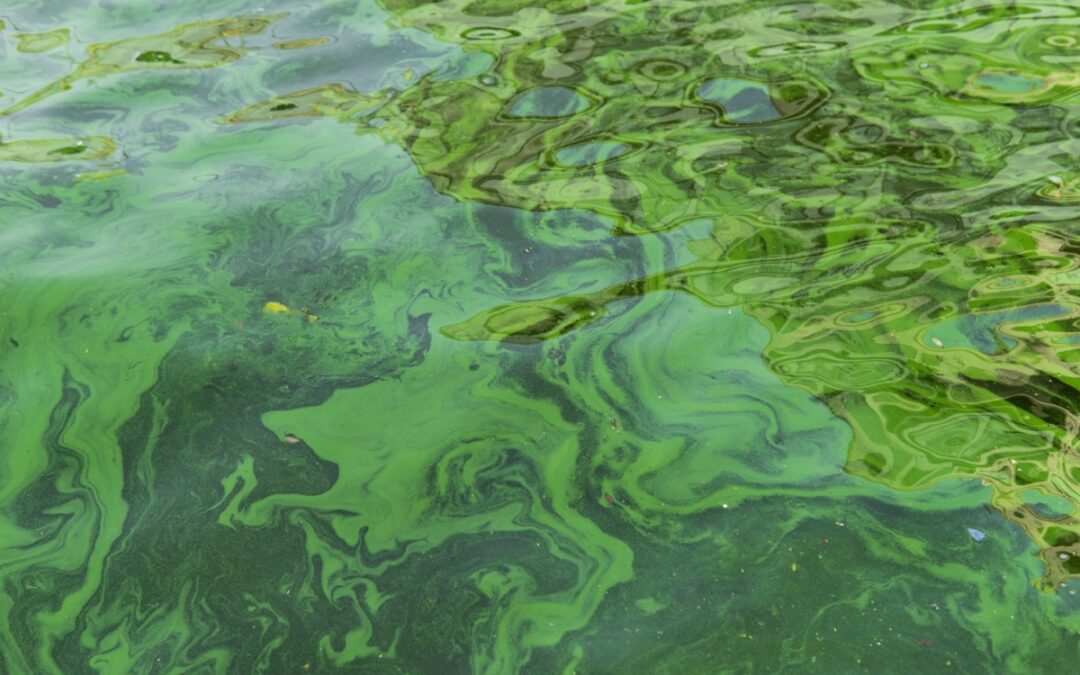Algae growth is a common problem for many pond owners. While a natural part of aquatic ecosystems, it can rapidly overgrow when conditions are right and adversely affect your pond’s health and aesthetics. When excessive algae blooms occur, your pond water may turn green and appear murky. This can reduce the beauty and health of the pond while limiting recreational activities. What’s even worse is that dense algae growth depletes oxygen levels, threatening the fish and beneficial bacteria that rely on this precious resource.
While chemical treatments are often used to combat algae blooms, many pond owners seek safer, more sustainable ways to handle this issue. Fortunately, it’s possible to treat algae using natural algae control methods that are gentle on your pond’s ecosystem and effective in the long term.
Prevent Algal Blooms by Controlling Excess Nutrients
One of the most important steps in preventing algae problems is to control excess nutrients in your pond water. Nutrients like nitrogen and phosphorus, typically from fertilizer runoff, decaying plant material, and animal waste, act as a food source for algae. Reducing these excess nutrients can inhibit the growth of algae and minimize future blooms.
Tips to Control Nutrients
- Reduce Fertilizer Runoff: If you have landscaping near your pond, use fertilizers sparingly. Switch to slow-release fertilizers that are less prone to runoff and avoid applying them before rain.
- Manage Organic Debris: Regularly remove leaves, grass clippings, and other organic material from your pond to reduce nutrient buildup as these materials decompose.
- Use Buffer Zones: Plant grass or native vegetation around the pond to absorb excess nutrients before they enter the water.
- Control Livestock Access: If you have livestock, keep them from accessing the pond directly to minimize waste contamination.
Control Algae With Aquatic Plants
Aquatic plants can serve as a powerful ally in your pond’s ecosystem. By competing directly with algae for sunlight and nutrients, these plants can suppress algal blooms naturally and without chemicals. Some of the best plants for your pond include submerged plants, marginal plants, and floating plants.
Submerged plants like hornwort are entirely underwater and directly absorb nutrients from the pond water, thus reducing the resources available to algae. Marginal plants, such as cattails and pickerelweed, grow along the pond’s edge. They help inhibit algal blooms by absorbing nutrients and shading the surface, limiting the sunlight that algae need to thrive. Floating plants, including water lilies and duckweed, provide significant surface cover and act as natural sun blockers to hinder algae growth. Incorporating a mix of these plants into your pond can create a balanced ecosystem that keeps algae in check.
Control Algae Growth With Aeration
Aeration improves water quality by increasing the oxygen levels in the pond and facilitating water circulation. A well-aerated body of water supports beneficial bacteria that decompose organic matter and reduces stagnation that can lead to algae blooms. Install an aeration system such as a fountain or a bottom diffuser to enhance water movement and maintain healthier pond water.
Use Biological Augmentation to Manage Algae
Biological augmentation is a natural algae control method that involves introducing beneficial bacteria or microbes into the pond to help control excess nutrients and treat algae. These bacteria outcompete algae for food sources and break down organic material that contributes to nutrient buildup.
Keep Your Pond Healthy With Aquagenix
Natural algae control methods are a practical way to maintain your pond’s health without relying on chemicals. If you’re looking for expert advice on treating algae or comprehensive aquatic weed control solutions, consider scheduling a service with Aquagenix. Our team can provide a tailored approach to managing your algae problems, improving water quality, and ensuring the long-term beauty of your pond.
Reach out today and discover how we can help you achieve an algae-free pond through sustainable, natural methods!


Recent Comments